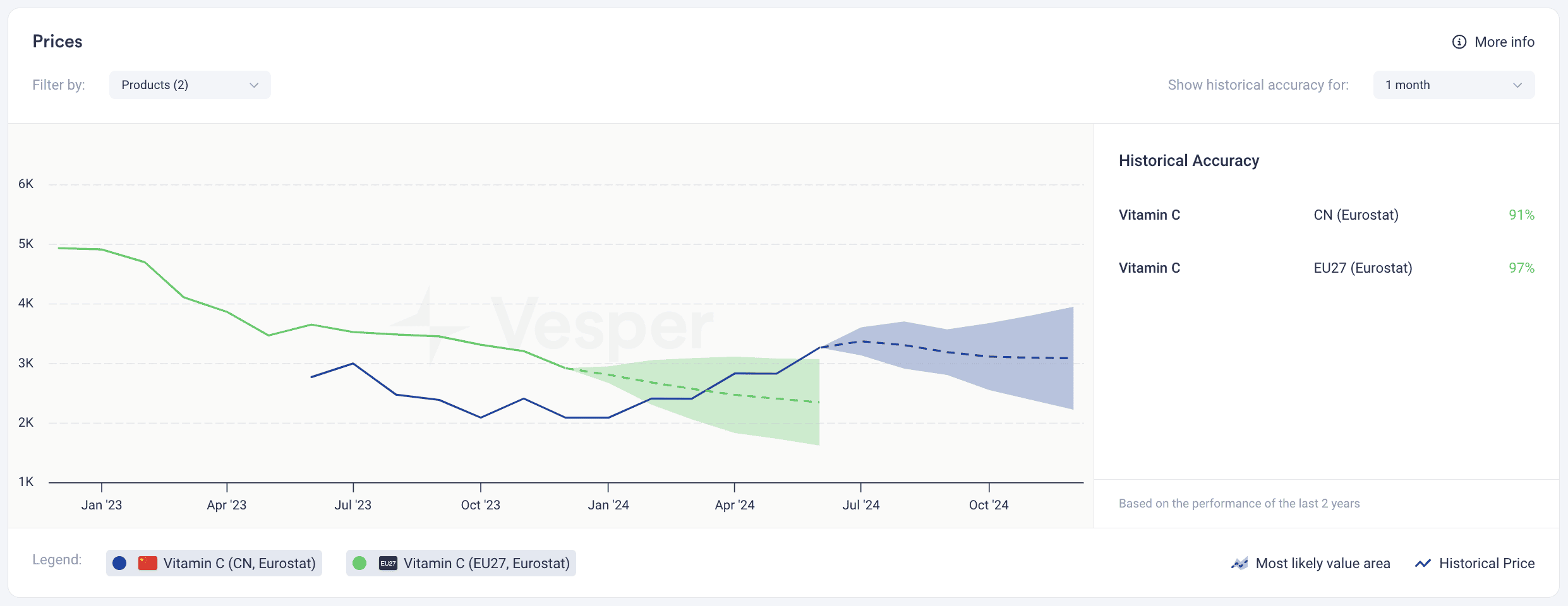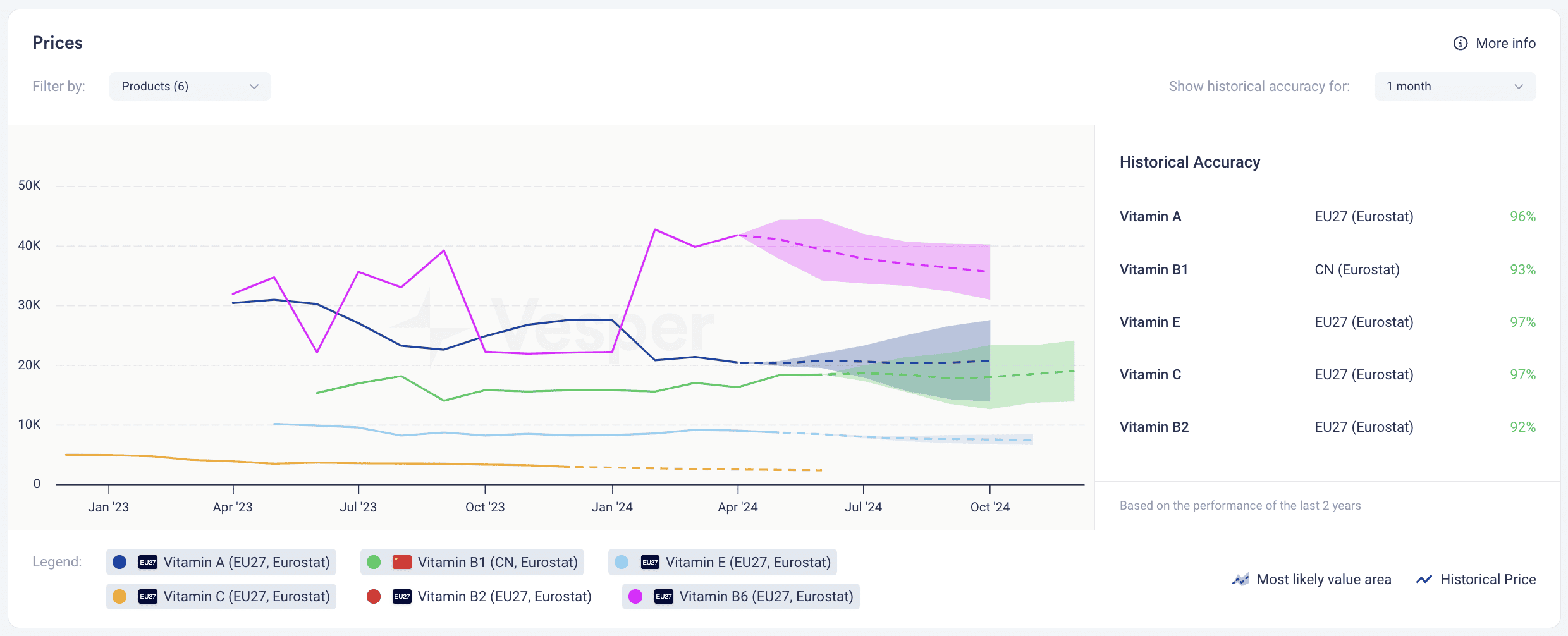In this scenario, switching suppliers from Europe to China would not be beneficial due to the higher forecasted prices in China. Instead, businesses should focus on sourcing more Vitamin C from European suppliers to capitalise on the expected lower prices. Additionally, sourcing locally within Europe can reduce shipping costs and regulatory hurdles, further optimising cost-efficiency. By using Vesper’s price forecasts, companies can make more strategic sourcing decisions, choosing suppliers based on future price trends to minimise costs and enhance profitability.
How Accurate Are Chemicals Price Forecasts?
Chemicals price forecasts are created using sophisticated models that analyse historical data, market trends, and economic indicators. While it’s impossible for any forecast to be 100% accurate due to the unpredictable nature of market dynamics, advanced algorithms and real-time data make these forecasts more reliable than traditional human methods. Various platforms, such as Vesper, ICIS, Argus Media, IHS Markit, Bloomberg, Reuters, and S&P Global Platts, provide comprehensive data, including price forecasts, historical pricing, market analysis, and supply-demand outlooks for different chemicals.
Vesper, for instance, uses cutting-edge algorithms and continuously updates its data with the latest market developments to enhance the accuracy of its forecasts. However, the accuracy can vary depending on the specific chemical product. For example, in the image below, Vesper shows differing levels of forecast accuracy for various vitamins.

